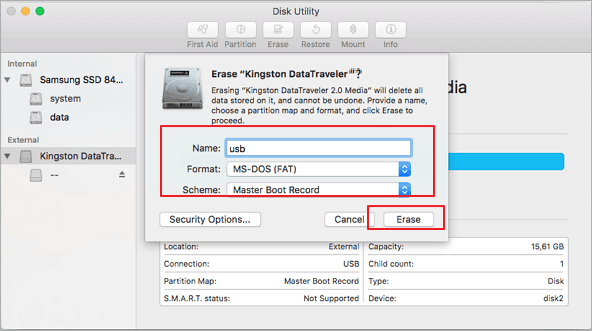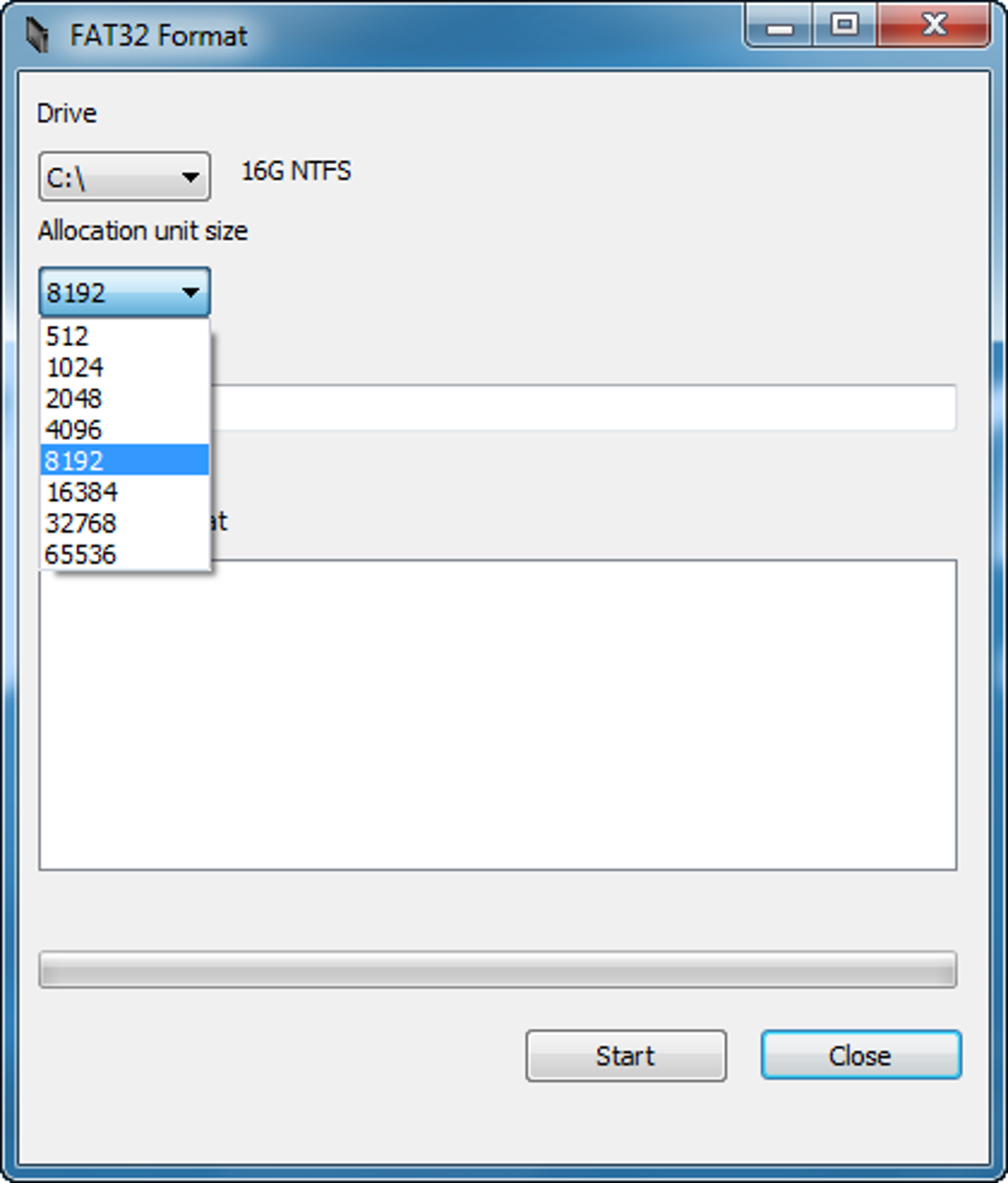Fat Or Fat32 For Mac
Nov 13, 2019
To do FAT32 format on a Mac, please follow these simple steps: 1) Once the SD card is detected on your Mac, go to Applications Utilities double click and open Disk Utility. 2) Select your SD card on the sidebar, choose Erase. 3) Rename the SD card, choose the format as MS-DOS (FAT) for Format, Master Boot Record for Scheme. Open the drop down menu “File system” and select FAT or FAT32. NTSF and exFAT will not work. The “Quick format” option should be checked. Click “OK” to confirm that you have read the warning. A few seconds later the process should be done, The USB flash drive is now ready for the software update procedure. Linux and Mac OS. The standard formatting tools built into these operating systems are able to create FAT32 partitions; they might also be labelled as FAT or MS-DOS. Simply delete the existing exFAT partition and create and format a new FAT32 primary partition, before proceeding with the rest of the NOOBS instructions. On a Mac, this means. 1 Format a USB Drive to FAT32 in Mac OS with Disk Utility. Insert the USB to be formatted to a Mac PC. Navigate to Applications Utilities, and click it twice to open it. Select the drive you want to format and click on Erase. Rename the USB drive (optional), and choose the MS-DOS(FAT) for format.
Windows-supported operating systems rely on one of two different types of file systems: File Allocation Table (FAT) or New Technology File System (NTFS).
While both file systems were created by Microsoft, each has different benefits and disadvantages related to compatibility, security, and flexibility.
In this article, we will break down what a FAT file system is, what an NTFS file system is and what the pros and cons are for each system.
What Is FAT?
Microsoft created the File Allocation Table file system in 1977 and is the simplest file system supported by Windows NT. It is the older of the two file systems and therefore isn’t as efficient or advanced. However, it does offer more compatibility with other operating systems and removable storage devices.
The FAT is used to describe the allocation status of the clusters (the basic units of logical storage on a hard drive) in a file system, as well as the link relationship between each. It acts as a Table of Contents for the operating system, indicating where directories and files are stored on the disk.
A FAT is often most used in removable storage devices, such as digital cameras, Smart TVs and other portable devices.
The file allocation table is a critical part of the FAT file system. If the FAT is damaged or lost, the data on the hard disk becomes unreadable.
There are several limitations to using a FAT32 file system:
- FAT32 only supports files of up to 4GB in size and volumes of up to 2TB in size
- FAT32 isn’t a journaling file system, which means corruption can happen more easily
- FAT32 doesn’t support file permissions
What Is NTFS?

Microsoft created the New Technology File System in 1993, and it is now the most widely used file system in Windows.
It was introduced as a replacement for the FAT file system, designed to improve upon FAT by increasing performance, reliability and disk space.

NTFS supports:
- Very large files
- Different file permissions and encryption
- Automatically restores consistency by using log file and checkpoint information
- File compression when running out of disk space
- Establishing disk quotas, limiting space users can use
FAT vs. NTFS
FAT is the more simple file system of the two, but NTFS offers different enhancements and offers increased security. Choosing the right operating system depends on your needs.
- Fault Tolerance: NTFS automatically repairs files/folders in the case of power failures or errors. FAT32 maintains two different copies of the FAT in the case of damage.
- Security: FAT32 only offers shared permissions, while NTFS allows you to set specific permissions to local files/folders.
- Compression: FAT32 does not offer any compression option. NTFS does allow for individual compression of files and folders so you don’t slow down the system.
- Compatibility: NTFS is compatible with operating systems back to Windows XP. For Mac OS users, however, NTFS systems can only be read by Mac, while FAT32 drives can be both read and written to by the Mac OS.
Fat Or Fat32 For Raspberry Pi
The biggest disadvantage of using the NTFS file system is compatibility:
- Many removable devices, such as Android smartphones don’t support NTFS
- While Mac OS X can read support for NTFS drives, but it can’t write to NTFS drives without third-party software
- Some media devices, including Smart TVs, media players, and printers, don’t support NTFS
- NTFS file systems are only compatible with Windows 2000 and later versions of Windows
When it comes to removable devices, it’s safer to use FAT32 so they can be used with almost any device.
Read Fat32 On Mac
There is no clear winner when it comes to FAT vs. NTFS. Choosing the right file system depends on your individual needs and uses.
